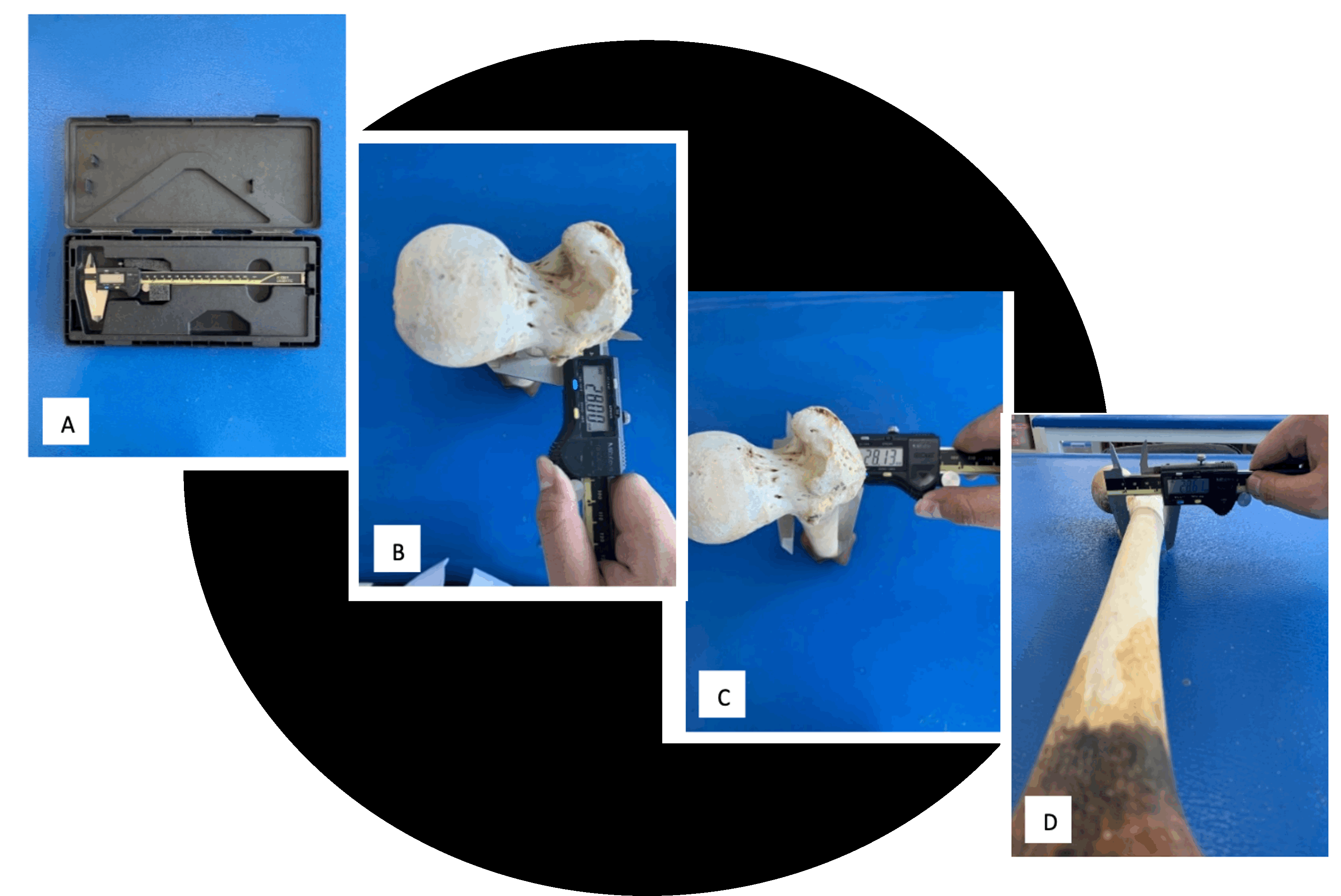Ancestry evaluation from subtrochanteric shape of femur using Tallman and Winburn's Adjusted Platymeric Index: A validation study in the Northern Thai population
Main Article Content
Abstract
Background: Ancestry estimation of unidentified human skeletons using metric parameters of bones other than the skull, such as the subtrochanteric shape of the femur, is a challenging method in cases with limited information from cranial examination. The results of multiple studies show that the subtrochanteric shape can differentiate Asian and non-Asian individuals. However, the cut-point of the platymeric index for subtrochanteric shape might need adjustment for each region or country for higher accuracy, due to interpopulation and intrapopulation variation.
Objectives: This study aims to validate the cut-point adjusted for the Thai population suggested by Tallman and Winburn and observes the differences between each sex within the same population.
Materials and methods: The researchers conduct the study by collecting and calculating multiple parameters (such as femoral subtrochanteric diameters and shape, and platymeric index) from 130 northern Thai individuals collected from the Chiang Mai University bone collection, then making comparisons with the traditional cut-point, and comparing these parameters between different populations and sex.
Results: The results show that the accuracy of ancestry estimation is improved from 46.38% to 57.49%, using an adjusted cut-point. This study also notes that the platymeric index of the northern Thai samples is significantly higher (p<0.05) than the north-eastern samples recorded by Tallman and Winburn. Moreover, the index of the male Thai samples is significantly higher (p<0.05) than the female samples from the same bone collection.
Conclusion: This study approves the use of the adjusted cut-point in the northern Thai region and indicates an intrapopulation variation and sexual dimorphism of subtrochanteric shape which might influence ancestry assessment.
Article Details

This work is licensed under a Creative Commons Attribution-NonCommercial-NoDerivatives 4.0 International License.
Personal views expressed by the contributors in their articles are not necessarily those of the Journal of Associated Medical Sciences, Faculty of Associated Medical Sciences, Chiang Mai University.
References
Christensen AM, Passalacqua NV, Bartelink EJ. Forensic anthropology: current methods and practice. 2nd ed. London: Academic Press; 2019.
Hefner JT, Linde KC. Atlas of human cranial macromorphoscopic traits. San Diego: Academic Press; 2018.
Hefner JT. Cranial non-metric variation and estimating ancestry. J Forensic Sci. 2009; 54(5): 883-90. doi: 10.1111/j.1556-4029.2009.01118.x.
Tallman SD, Winburn AP. Forensic applicability of femur subtrochanteric shape to ancestry assessment in Thai and white American males. J Forensic Sci. 2015; 60(5): 1283-9. doi: 10.1111/1556-4029.12775.
Craig EA. Intercondylar shelf angle: a new method to determine race from the distal femur. J Forensic Sci. 1995; 40(5): 777-82. doi: 10.1520/JFS15383J.
Gill GW. Racial variation in the proximal and distal femur: heritability and forensic utility. J Forensic Sci. 2001; 46(4):791-9. doi: 10.1520/JFS15049J.
Gilbert BM. Anterior femoral curvature: its progably basis and utility as a criterion of racial assessment. Am J Phys Anthropol. 1976; 45(3 pt. 2): 601-4. doi: 10.1002/ajpa.1330450326.
Wescott DJ. Population variation in femur subtrochanteric shape. J Forensic Sci. 2005; 50(2): 286-93. doi: 10.1520/JFS2004281.
Duray SM, Morter HB, Smith FJ. Morphological variation in cervical spinous processes: potential applications in the forensic identification of race from the skeleton. J Forensic Sci. 1999; 44(5): 937-44. doi: 10.1520/JFS12020J.
Buxton LH. Platymeria and platycnemia. J Anat. 1938; 73(Pt 1): 31-6.
Gill GW. Challenge on the frontier: discerning American Indians from whites osteologically. J Forensic Sci. 1995; 40(5): 783-8. doi: 10.1520/JFS15384J.
Wescott D, Srikanta D. Testing assumptions of the Gilbert and Gill method for assessing ancestry using the femur subtrochanteric shape. Homo. 2008; 59(5): 347-63. doi: 10.1016/j.jchb.2008.05.002.
Bass WM. Human osteology: a laboratory and field guide. 5th ed. Columbia: Missouri Archaeological Society; 2005.
Vercellotti G, Stout SD, Boano R, Sciulli PW. Intrapopulation variation in stature and body proportions: social status and sex differences in an Italian medieval population (Trino Vercellese, VC). Am J Phys Anthropol. 2011; 145(2): 203-14. doi: 10.1002/ajpa.21486.
Mulder B, Stock JT, Saers JPP, Inskip SA, Cessford C, Robb JE. Intrapopulation variation in lower limb trabecular architecture. Am J Phys Anthropol. 2020; 173(1): 112-29. doi: 10.1002/ajpa.24058.
Unnanuntana A, Rebolledo BJ, Khair MM, DiCarlo EF, Lane JM. Diseases affecting bone quality: beyond osteoporosis. Clin Orthop Relat Res. 2011; 469(8): 2194-206. doi: 10.1007/s11999-010-1694-9.
Sample size to estimate a simple proportion [Internet]. Epitools. [cited 2021 Sep 13]. Available from: https://epitools.ausvet.com.au/oneproportion
Buikstra JE, Ubelaker DH. Standards for data collection from human skeletal remains. 3rd ed. Fayetteville: Arkansas archeological survey; 1997.
Tan CK. Some characteristics of the Chinese femur. Singapore Med J. 1973; 14(4): 505-10.
Manuel JK, Bin Mohd MY. Some Anthropometric Studies of the Femur of the Male West Malaysian Chinese. Am J Phys Anthrop. 1974; 41(1): 133-7. doi: 10.1002/ajpa.1330410117.
McIlvaine BK, Schepartz LA. Femoral subtrochanteric shape variation in Albania: implications for use in forensic applications. Homo. 2015; 66(1): 79-89. doi: 10.1016/j.jchb.2014.09.004.
Purkait R, Chandra H. A study of sexual variation in Indian femur. Forensic Sci Int. 2004; 146(1): 25-33. doi: 10.1016/j.forsciint.2004.04.002.


